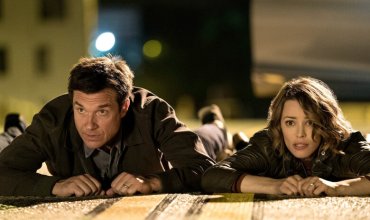If you know your movies you’ll be aware The Wrecking Crew was the name of a 1969 Dean Martin movie in which he played the spy Matt Helm for the third and final sequel of the series. Catch those flicks on one of those new-fangled digital channels some time, they’re stupidly entertaining. The Wrecking Crew is also the name that was coined for a group of session musicians working in Los Angeles in the 1960s.
Depending on whom you believe, The Wrecking Crew was one of those zeitgeisty terms that just happened or it was invented by drummer Hal Blaine, a Crew member. It referred to the attitude of the session musicians of the previous generation who had a refined sensibility about their work, dressed in suits, didn’t smoke in the studios and didn’t approve of the new wave of younger players. They thought the newbies would wreck the music industry.
What actually happened is that for a decade or so these new musicians played on the recordings of many of the greatest songs of the era. Detroit and New York were the hubs of popular music and now Los Angeles became the place to go. The surf music of The Beach Boys and Jan and Dean was something of a catalyst for this shift westward and soon there were a multitude of talents playing on the television, movies and hit records of the time.
This documentary looks at the story of the Crew from the inside. Producer and director Denny Tedesco began by wanting to make something of a tribute to his father, key Crew member guitarist Tommy Tedesco, who had just been diagnosed with cancer. Denny did in fact complete a half hour film, however many who saw the short wanted him to expand on the material. Over the course of 18 years from the mid 90s onward, he put together film and video interviews with surviving Crew members, as well as industry insiders with stories to tell; people like Cher, Dick Clark, Nancy Sinatra, Herb Alpert and Brian Wilson navigate us through the story.
We see how the Crew performed as part of Phil Spector’s Wall of Sound, get an insight into working with Brian Wilson and recording with Frank and Nancy Sinatra. The main structure of the documentary is a round table with Tommy Tedesco, Hal Blaine, saxophonist Plas Johnson and bassist Carol Kaye. They swap anecdotes and tell stories of what went on at the sessions. What builds up is a picture of professional musicians working hard, potentially from seven in the morning to late at night, five days a week. There are also many one-on-one interviews with the players. Carol Kaye’s moments are notable because she explains what she did and shows us by playing the bass. It’s a joy.
For fans of this era of American Rock and Pop, this is a must-see documentary that takes you behind the scenes and gives you a snapshot of a creatively rich era of popular music. These were the players who helped to make the music amazing. We’ve heard their work and now we can see who they were. 101 minutes (8/10).


